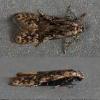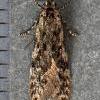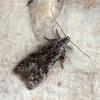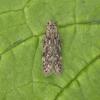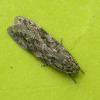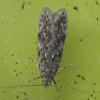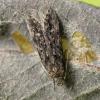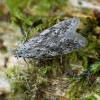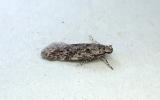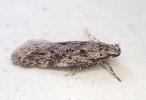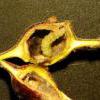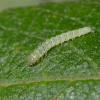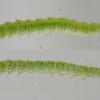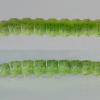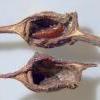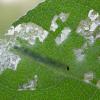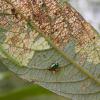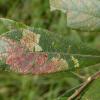35.150 Carpatolechia notatella (Hübner, 1813)
Status and Distribution
Widespread over much of England, Scotland (including the Western Isles), Wales, Ireland, Northern Ireland and Isle of Man. It does however appear to vary considerably in population density from being locally common in some regions to rare with few recent records in others. How much of this is down to under-recording is not known but the species is not strongly attracted to light. Apparently absent from the Channel Islands and the most northerly parts of Scotland, including the Northern Isles.
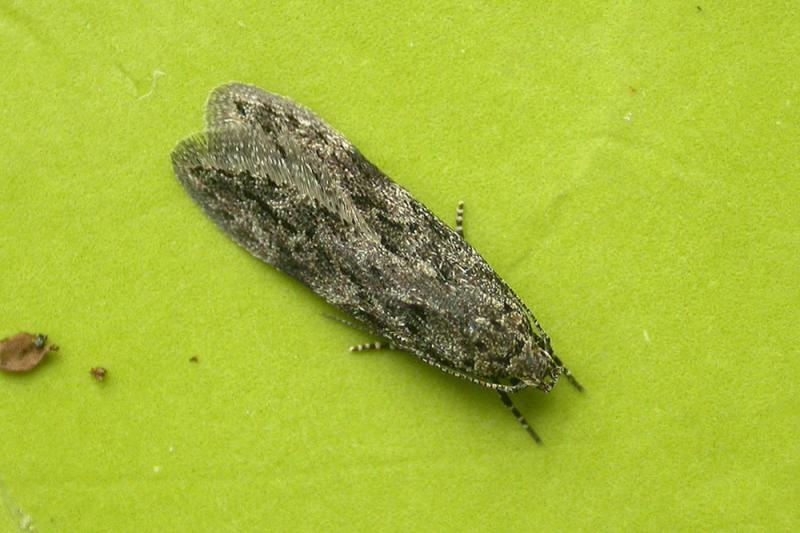
Provisional map
Foodplant and Larval Feeding Signs
Salix caprea (great sallow), see distribution map. Also recorded on S. cinerea * (grey sallow), S. viminalis ** (osier), S aurita *** (eared sallow) and S. repens **** (creeping willow).
In October 2012 a well developed larva was found inside a gall on Salix aurita in Garten Wood, Abernethy Forest NNR (NH954188) - no frass was evident. There was no other occupant in the gall and following pupation, C. notatella emerged in May 2013. It is assumed the larva crawled into an existing, empty, gall purely for pupation. Two similar galls nearby were empty. An article on this find was published by P. Shirley in Cecidology Vol.28, No 2:55.
* Bred extensively across England; first noted in Berkshire 1987 (M. F. V. Corley); more recently in North Northumberland 2015 (T. Tams).
** Bred in Berkshire 1977 (R. Fairclough).
*** Bred in Ireland, Scotland and southern England; first in West Ross 1965 (E. C. Pelham-Clinton); more recently in East Ross 2007 (R J Heckford) and Isle of Mull in 2024 (C. Austick)
**** Bred in East Inverness-shire 2000 (R J Heckford).
Habitat
Woodland, heathland, sheltered moorland, scrub and fens.
Finding the Moth
Larva: on the underside of a leaf beneath the hairs on the parenchema, sometimes curling the leaf and sometimes spinning two leaves together.
Adult: readily beaten from the food-plants during the day and comes to light.
Similar Species
Differs from the darker forms of Carpatolechia fugitivella in the absence of raised scales on the forewing, the presence of a usually prominent black spot at the base and a black streak in the fold and on the costa at one- and two-thirds.
Teleiodes wagae, where the forewing is more uniformly coloured, generally paler and lacks the black basal spot of C. notatella. Also the black spots on the forewing are not followed by light scales in T. wagae.
Carpatolechia proximella has the ground colour of the forewing light greyish, never the darker colouration of C. notatella.
Might be confused with worn, small specimens of Gelechia muscosella (which has a moss-green tinge when fresh). This species has a whitish subcostal spot at one-fifth and lacks the black basal spot on the forewing of C. notatella. If in doubt examination of the three basal upper sections of the abdomen, which are yellowish in G. muscosella and dark in C. notatella or the shape of the apex of the hindwing (thin finger-like projection obvious in C. notatella is barely present in G. muscosella).
Single brooded from late May to mid-July.
Earliest: 17th April 1983 (VC55)
Latest: 1st September 1990 (VC52) - exceptionally late, with a few mid-August being the next earliest dates

